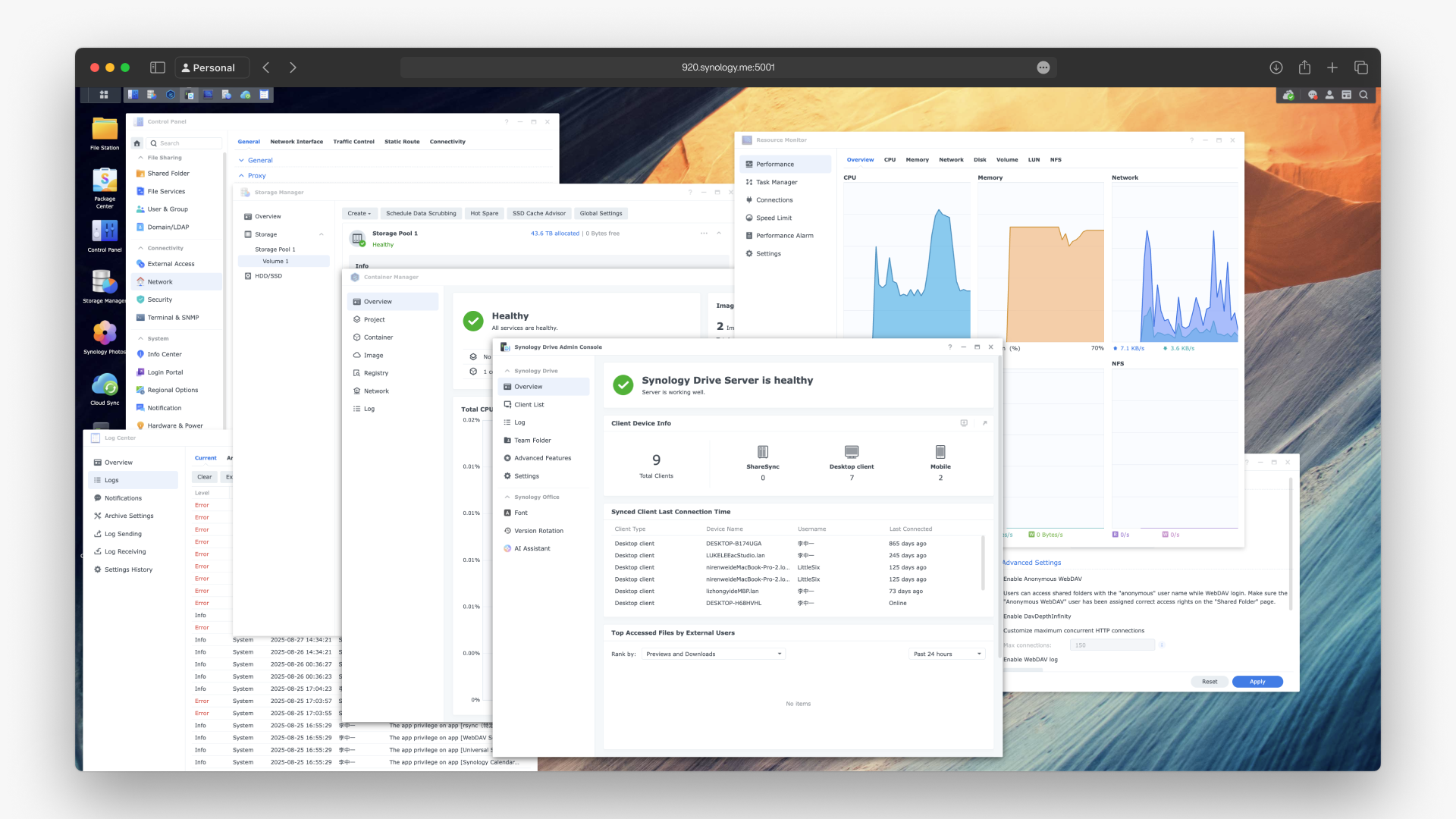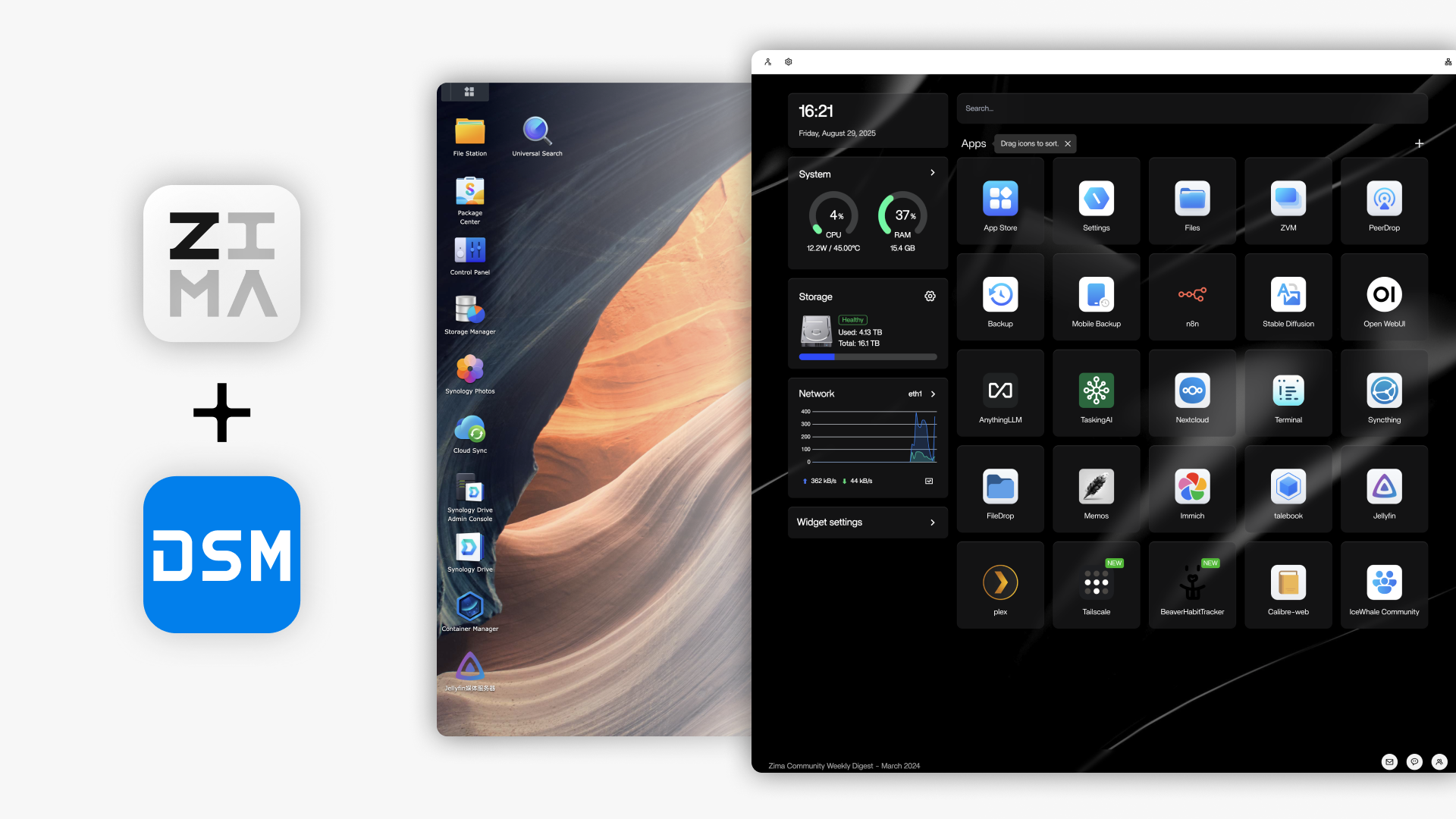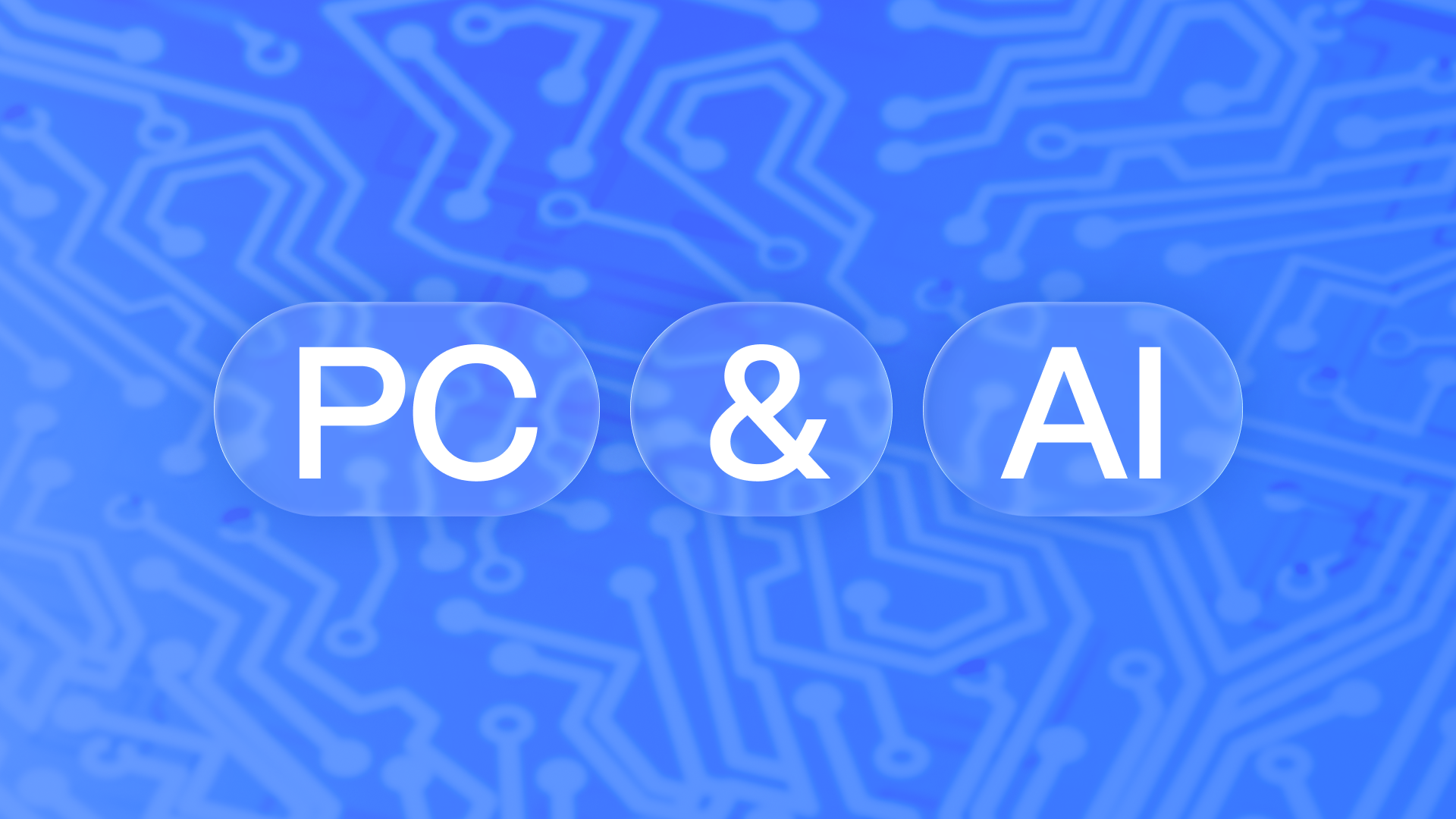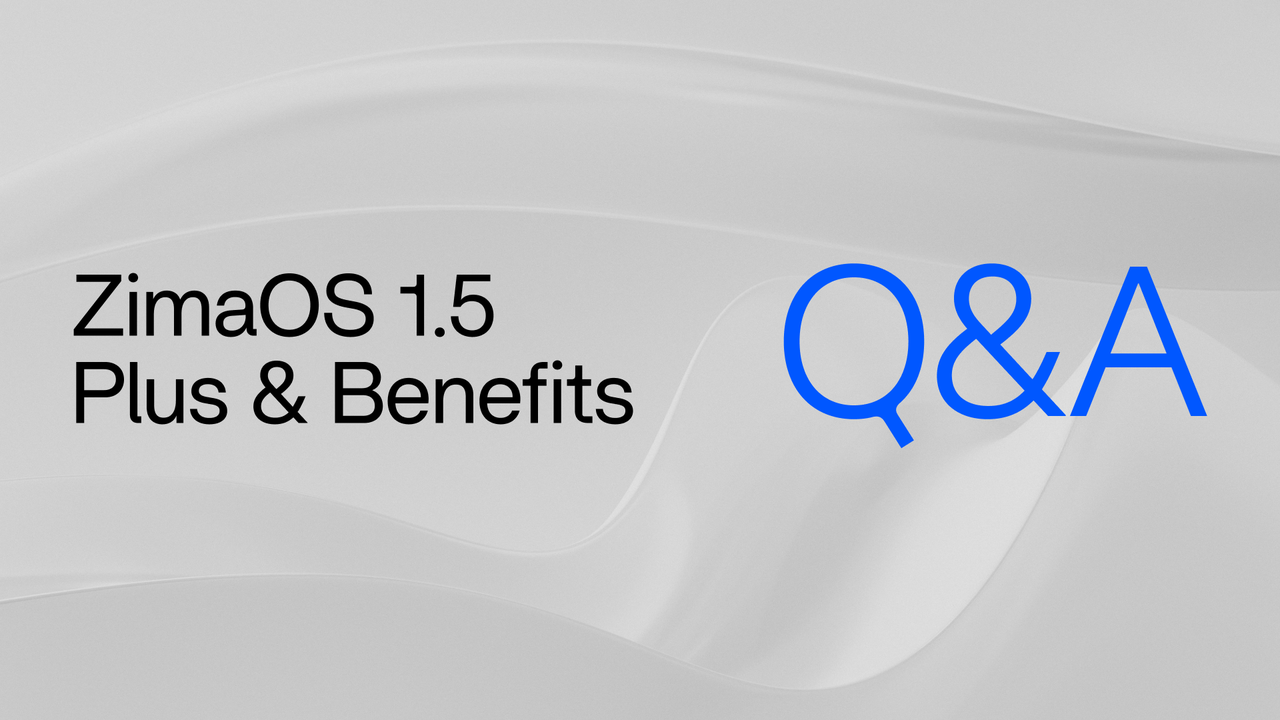Featured Posts
ZimaOS + DSM: Meet a Faster, Smoother NAS Experience
 Lauren Pan - Sep 10, 2025
Lauren Pan - Sep 10, 2025
The Evolution of DSM and the Rise of New System Opportunities
Synology’s DiskStation Manager (DSM) has long been a cornerstone of the NAS world, known for its mature array management and rock-solid functionality. Many would argue that it’s precisely because of DSM’s software excellence that Synology can command premium prices—even with relatively ordinary hardware. For years, DSM has delivered robust RAID support and a suite of official apps tailored to mainstream user scenarios.
However,
recent updates have sparked
considerable debate within the
reddit community. Many long-time users have voiced frustrations over DSM’s increasingly dated interface, the removal of once-available features, and a slower pace of innovation.Some have even pointed out that Synology has restricted support for third-party hard drives in latest DSM 7 and
removed several key media-related features, ultimately driving them away. Issues like subpar photo support and slow performance with large media libraries are also frequently cited.
While DSM remains a reliable workhorse, these shortcomings are fueling desire for change. A growing number within the community are now looking toward more modern, emerging NAS systems that combine traditional stability with cutting-edge flexibility.
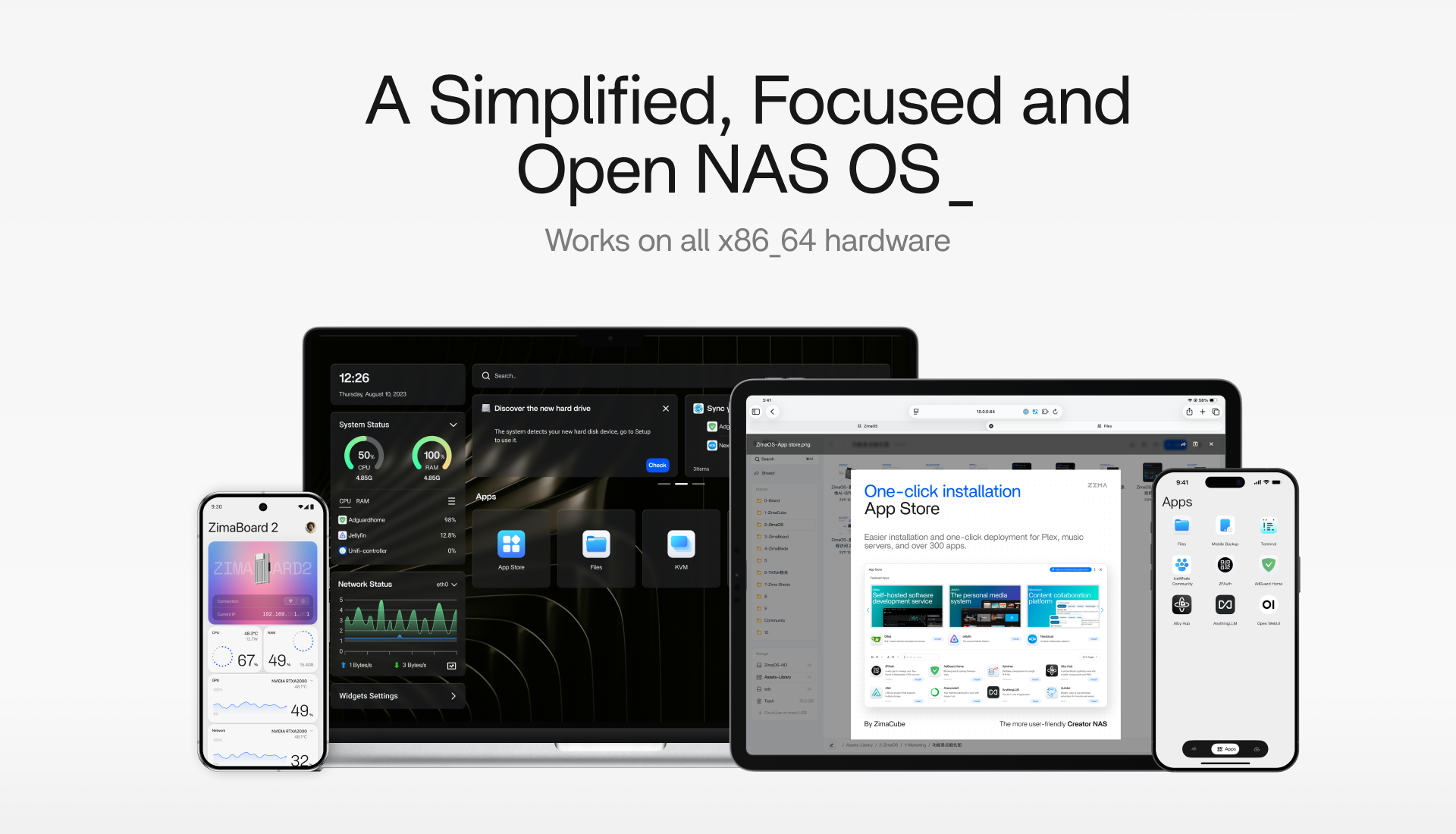
Modern NAS OS – Simplicity, Focus, Openness
As a next-generation lightweight NAS system, ZimaOS offers a completely revamped interface designed for simplicity and an intuitive user experience. Compared to DSM’s traditional desktop-inspired UI, ZimaOS delivers a sleek dashboard-style layout that is clean, responsive, and consistent across all platforms. The system embraces a minimal and unified design language and supports multiple languages, including English, making it accessible to a global audience. ZimaOS has surpassed 960,000 downloads.
Beyond that, ZimaOS maximizes practicality with features like straightforward file management, multi-cloud integration, support for massive media transfers, and zero-configuration P2P remote access. The customizable dashboard incorporates real-time system monitoring and widget panels, offering tech enthusiasts detailed insight into their device status while remaining simple enough for everyday home users to operate with ease.
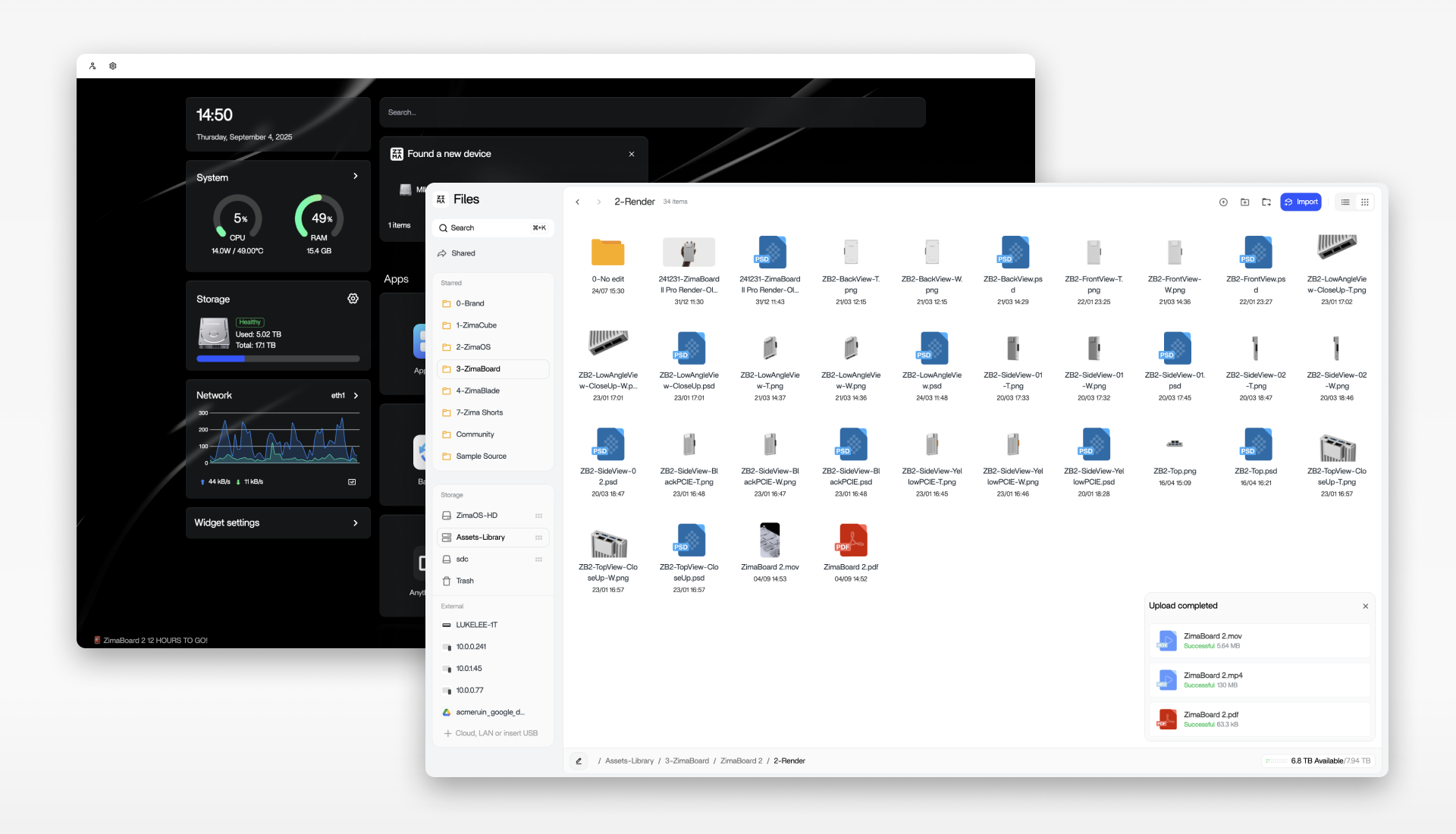
Mobile NAS Simplified – The Zima Client Delivers a Minimalist Mobile Experience
Many users criticize Synology’s mobile support as clunky—accessing the DSM web interface on a phone is often impractical, forcing reliance on awkward desktop-mode zooming and scrolling.
Zima client requires no complex network setup, offering instant mobile access that greatly reduces technical barriers. Whether traveling or working remotely, users get high-speed entry to personal data at home or in the studio—all through fully encrypted P2P connections withoutany cloud relay, putting privacy and control firmly in the user’s hands.
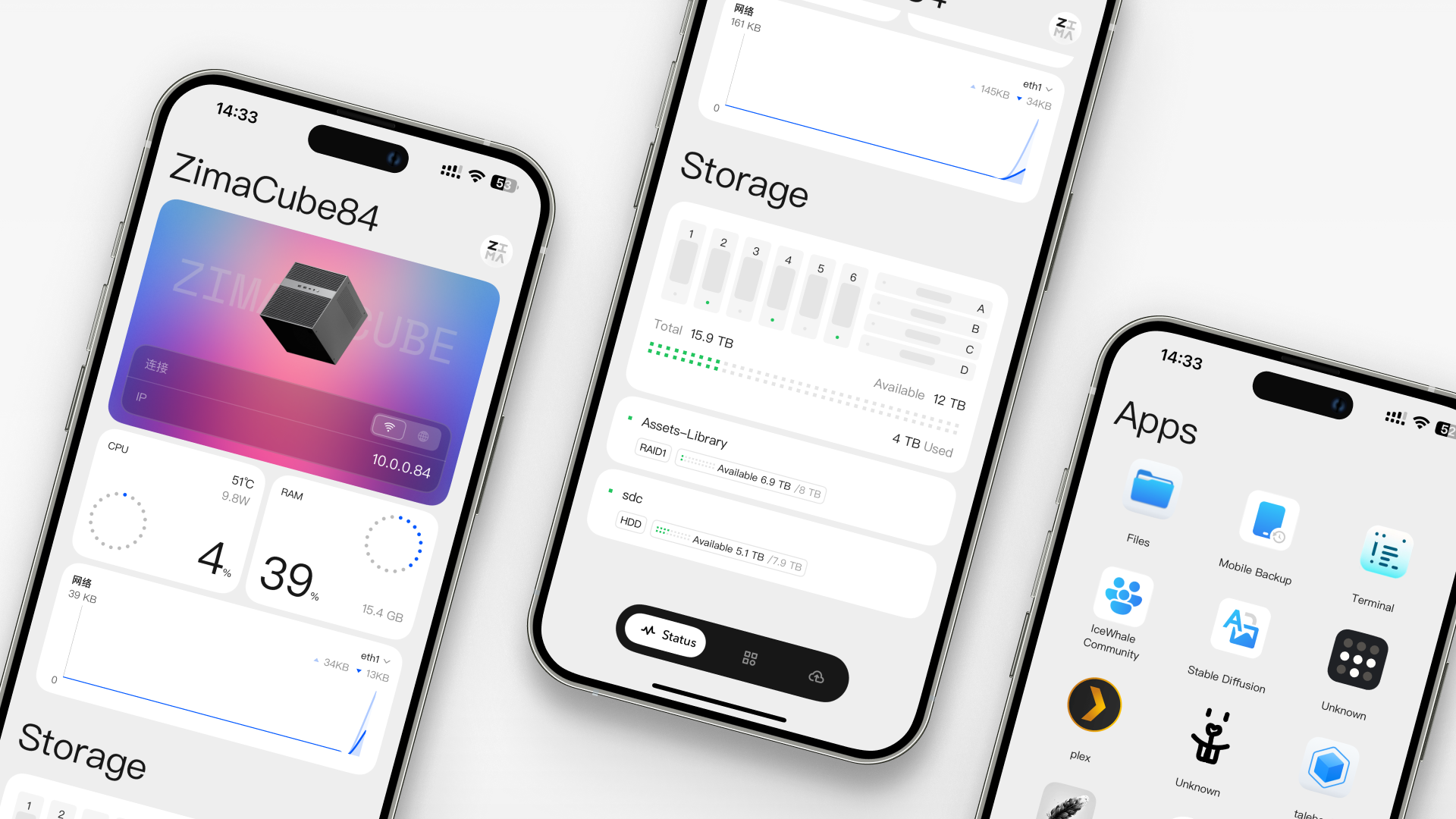
The 3-2-1 Backup Strategy – Built-In Architecture to Protect Creator Data
Backup is a fundamental yet multifaceted need. ZimaOS simplifies it around two core concepts: “From” and “To” built atop the robust 3-2-1 backup principle—keeping at least 3 copies of data across 2 different media, with 1 off-site copy.
ZimaOS supports a wide range of media—local hard drives, USB disks, other NAS devices on the LAN, and major cloud services like Google Drive and Dropbox. Photographers can sync RAW files to both local and cloud storage, while video editors can effortlessly back up 4K footage to external drives or remote servers. Advanced features like resumable transfers and 5-version history allow quick recovery from accidental changes or deletions. Even if the connection drops, backups resume automatically without restarting. These thoughtful designs meet the dual demands of data security and workflow efficiency, offering peace of mind.
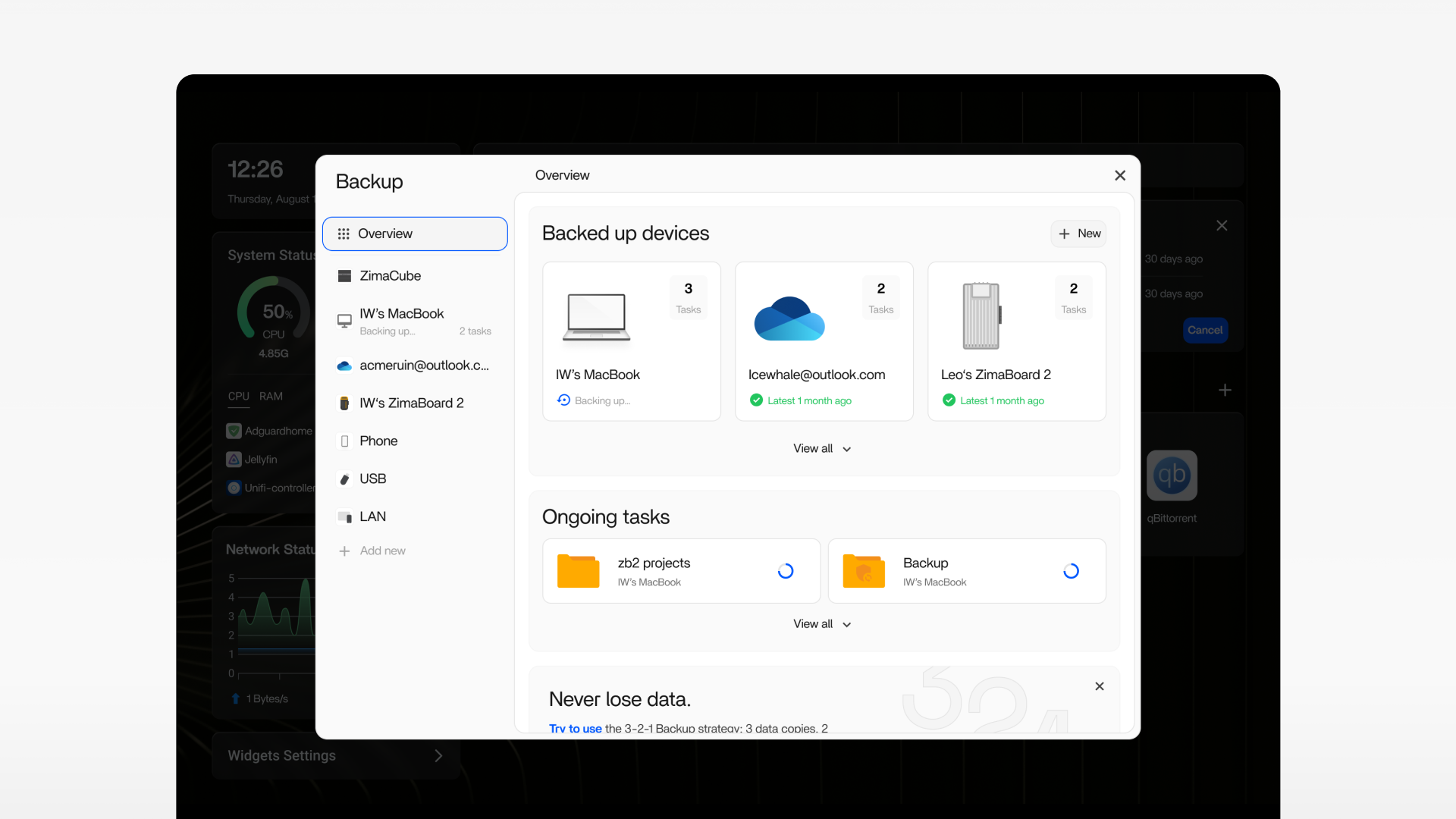
High-Speed Data Flow – Seamless File Transfer for Creators
For video editors, photographers, and creative professionals, NAS performance often hinges on transfer speeds. ZimaOS delivers a high-speed data flow solution that rivals local drives, fully leveraging modern hardware interfaces. With Thunderbolt direct-attach support on compatible devices, it achieves over 1 GB/s transfer rates and theoretical peaks up to 20 Gbps. This allows users to connect their computer directly to the NAS via a single cable, enabling near-instant access to and editing of 4K video files—eliminating tedious copy waits.
Under Wi-Fi 6 wireless networks, real-world file sync and preview speeds exceed 100 MB/s, fully utilizing available bandwidth. Whether uploading that day’s RAW photos over a high-speed local network or organizing libraries on the fly, the experience remains fluid and interruption-free. This high-performance data flow is a defining advantage of modern NAS systems like ZimaOS—unlocking hardware potential and saving creators invaluable time.
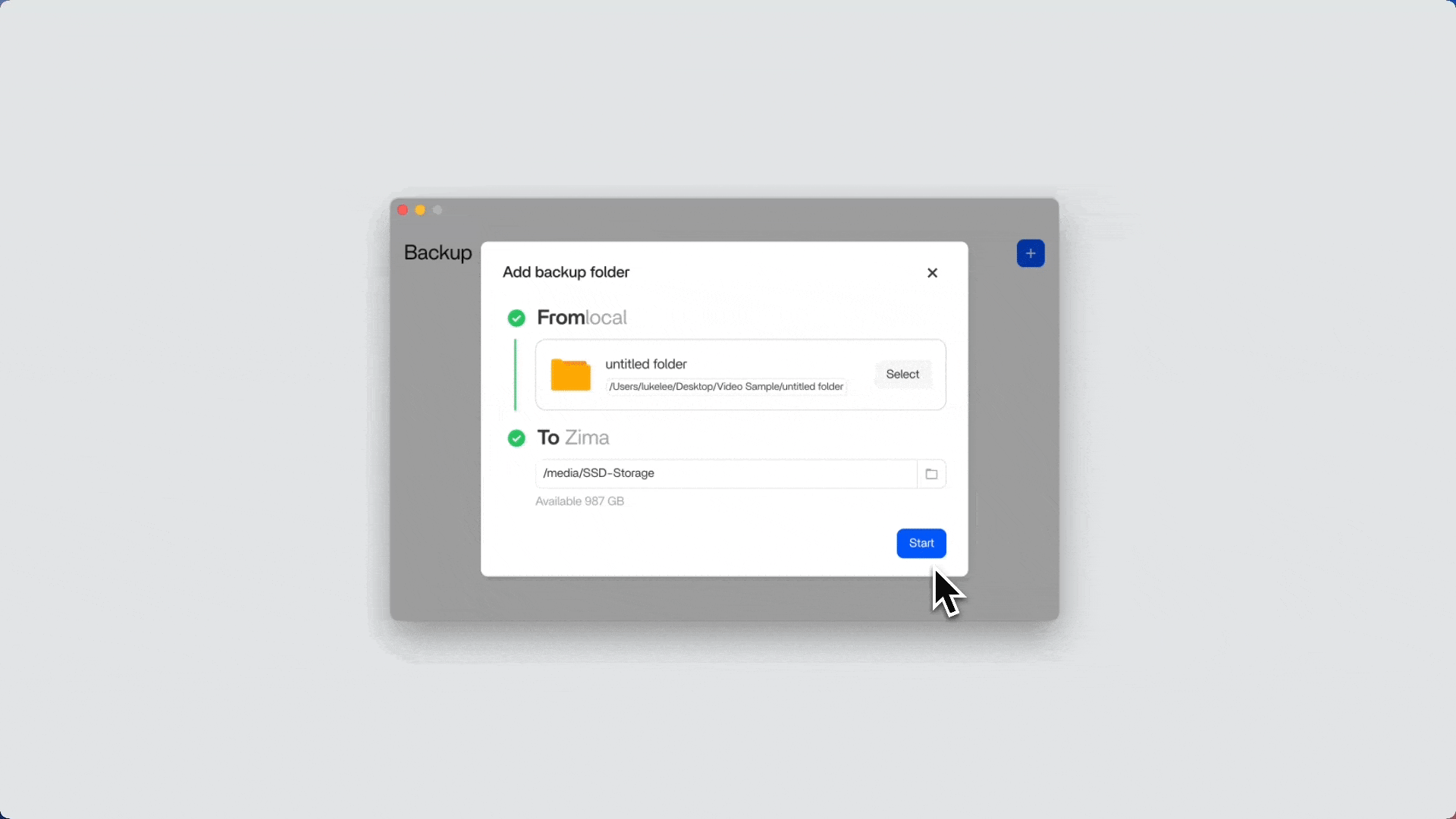
A local-to-NAS backup using ZimaOS shows a high speed
Community-Powered Apps – The ZimaOS Ecosystem Driven by Its Community
ZimaOS backed by a
30,000-member Discord community, the OS continues to grow and refine itself. Building on the open-source foundation of CasaOS, the ZimaOS App Store offers over
500 one-click deployable
applications, covering everything from home entertainment and productivity to development and hobbyist projects. This community-driven offers a more flexible and vibrant approach to NAS. For details on this part, please refer to
ZimaOS vs Synology DSM: A Fresh NAS OS Challenging the Established Leader.
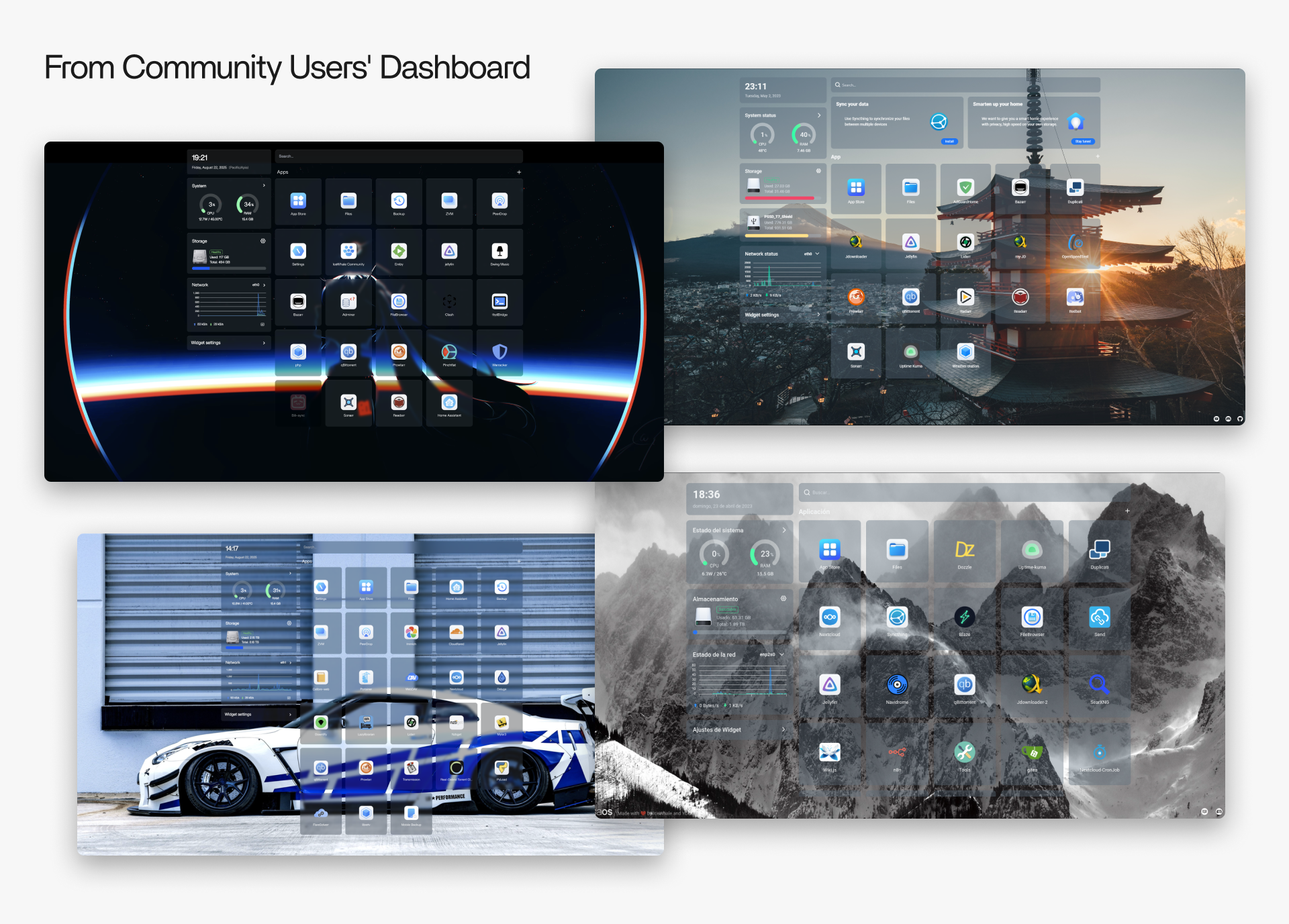
Dual-System Harmony: Integrating DSM with ZimaOS in 2 Steps
DSM and ZimaOS don’t have to be mutually exclusive—tools should adapt to your workflow, not the other way around. With ZimaOS, seamlessly integrating your Synology DSM network-attached storage is quick and intuitive.
ZimaOS offers full SMB protocol support. Simply open ZimaOS Files, click the “+” in the sidebar, select “LAN Storage”, then enter your DSM’s IP address and login credentials. Within seconds, all data from your Synology DSM RAID arrays becomes directly accessible through ZimaOS—no tedious migration needed.
Now you can let ZimaOS handle day-to-day data management, backups, and versatileapp deployment, while continuing to leverage your existing DSM storage. It’s harmony, not replacement.
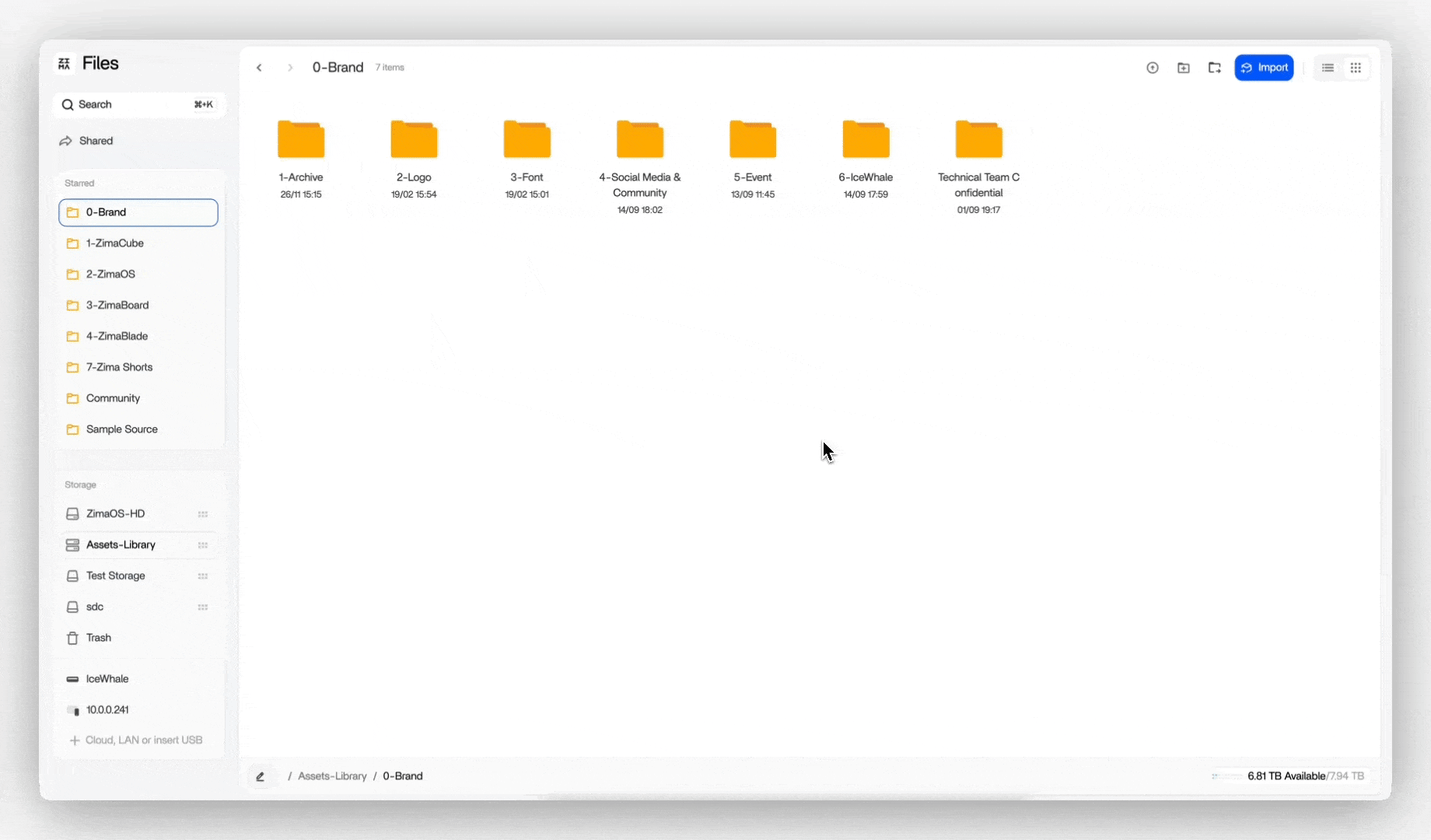
The Best of Both Worlds: Traditional Design Meets Modern Flexibility
You appreciate DSM’s proven reliability—but are you also growing tired of its stagnation? Now, you don’t have to choose. With the dual-system approach of ZimaOS and DSM, you can continue using all the trusted applications you rely on, while gaining unprecedented performance boosts and a sleek, modern user experience.
This is where classic robustness meets next-generation agility—finally, you really can have it all.
Together, they seamlessly unite proven reliable storage with modern local services. Start today and elevate your data management and application experience to a new level.
We warmly invite you to:
Join our Community – Follow updates, share feedback, and join the discussion
Suggest a Feature – Tell us what you need—let’s turn ideas into reality together
It all started with an observation: in the next decade, could every household have a small private cloud device? This could serve as a data asset manager for individuals and small organizations, the hub of a smart home, or even a local AI-powered Jarvis. You might call it a NAS, a home server, or something else, but we believe what truly matters is granting everyone the right to their own cloud.
Want to stay in the loop with the latest from Zima? Follow our blog and sign up for exclusive insights and updates.
Get Connected!
Receive exclusive insights, expert advice, and the latest updates right in your inbox.
![]() Lauren Pan - Sep 10, 2025
Lauren Pan - Sep 10, 2025
